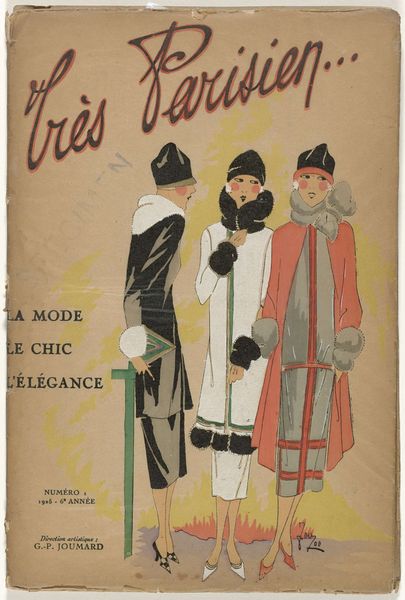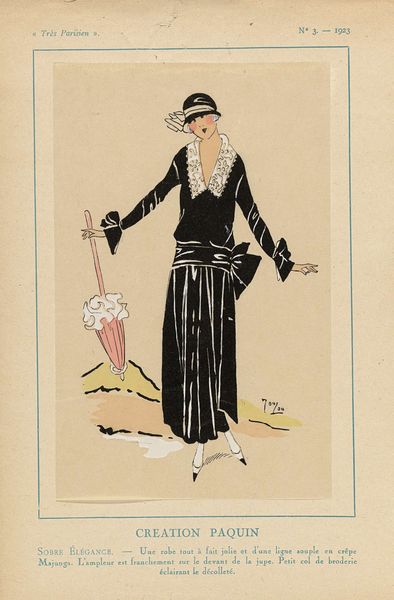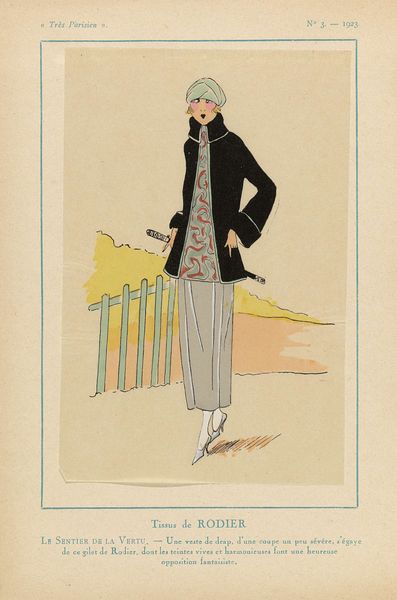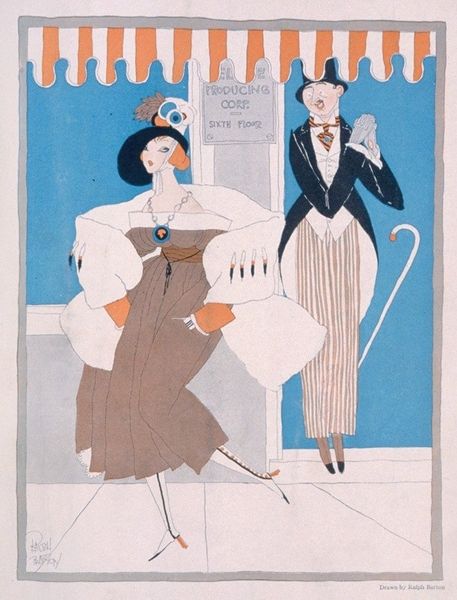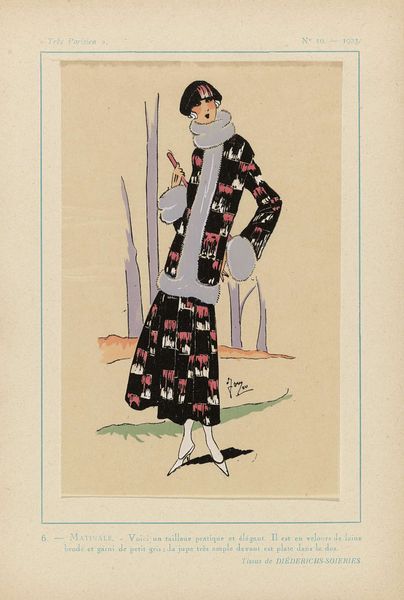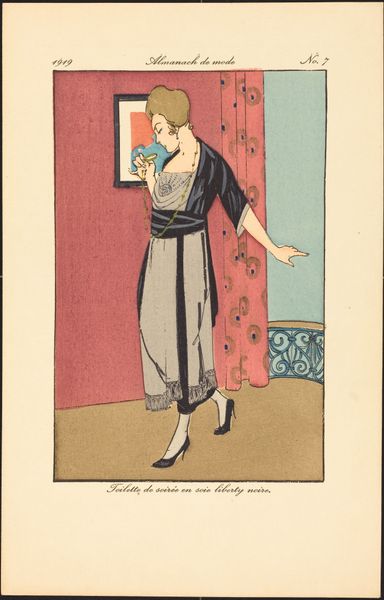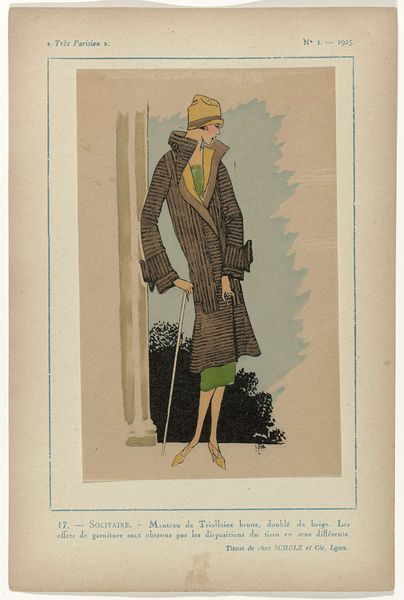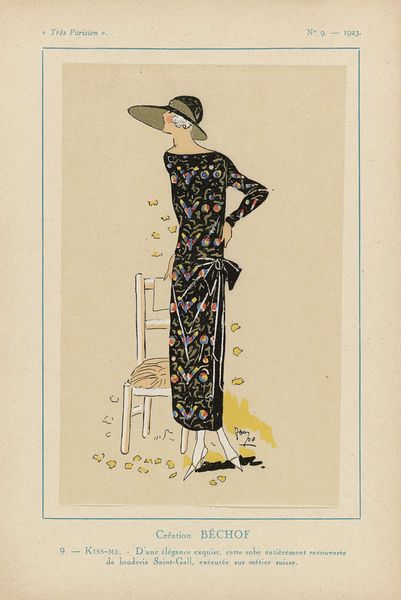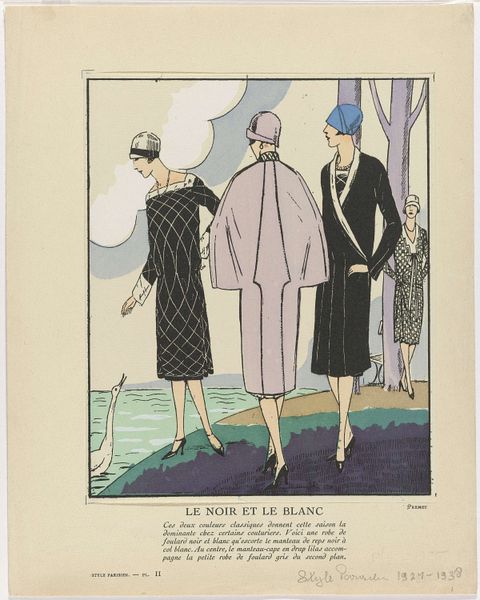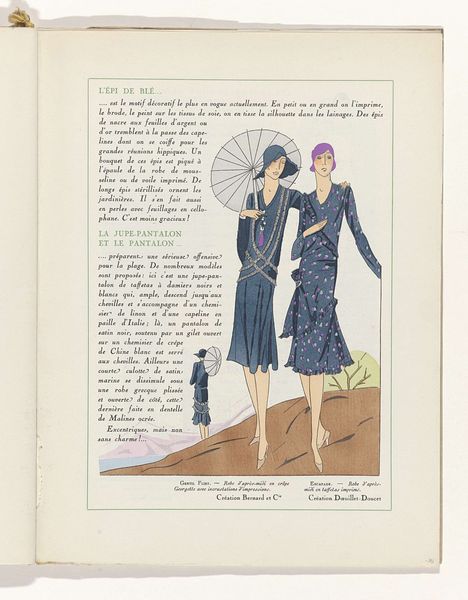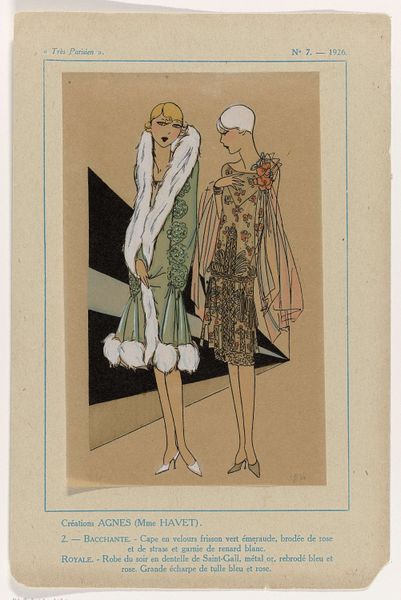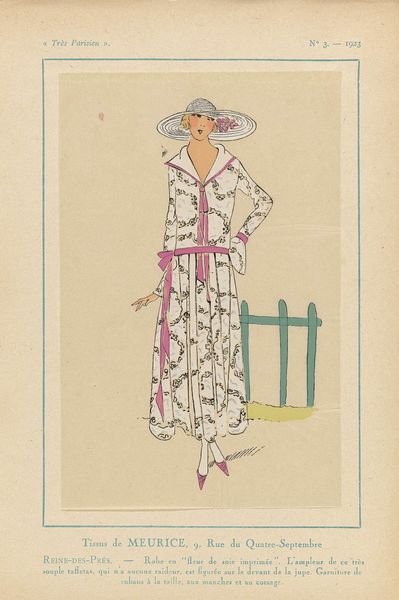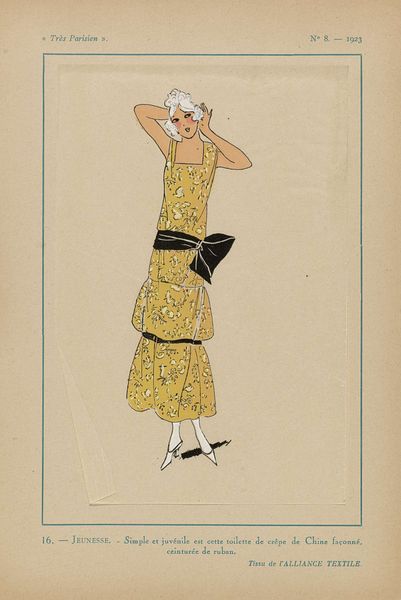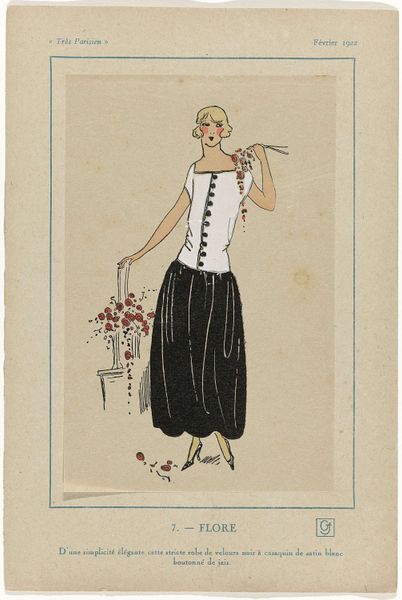
Très Parisien (...)La Mode Le Chic L'Élégance 1925, Numéro 7, 1925-6e Année 1925
0:00
0:00
print, watercolor
#
portrait
#
art-deco
#
water colours
# print
#
figuration
#
watercolor
#
cityscape
#
watercolour illustration
#
miniature
#
watercolor
Dimensions: height 275 mm, width 185 mm, thickness 007 mm
Copyright: Rijks Museum: Open Domain
Curator: This is a striking cover illustration for "Très Parisien," number 7 from 1925, an artwork credited to G-P. Joumard, currently held in the collection of the Rijksmuseum. Editor: It's really evocative, isn't it? That flatness, those muted tones… it almost feels like a blueprint for the flapper era, exuding an almost unattainable elegance. Curator: It’s fascinating how this artwork encapsulates the burgeoning social and cultural shifts of the time, particularly the rising status and image of women in urban environments. We see the quintessential "garçonne" figure. Editor: Absolutely, and notice how the artist highlights the fabrication and construction of her clothes through that detailed coat texture. Even the simple lines of her dress hint at the material processes of mass production entering the fashion industry. The Marokellaine de Rodier mention further confirms this. Curator: Precisely. There’s a dialogue here between the promise of liberation, conveyed through her androgynous style and relaxed pose, and the social constraints she inevitably still faces in 1920s Paris. Editor: The watercolor medium itself lends to the reading of both ephemeral beauty and something more grounded. The materiality echoes the economic realities influencing artistic output during the post-war period. Was watercolor favored for practical concerns and economics rather than, say, oil? Curator: The application of watercolor provides a unique perspective through its fluidity to echo ideas about gender performance and its delicate negotiations. How she holds herself on what looks to be a balcony...it suggests an intersection of private reflection and public spectacle. The space frames her and her identity. Editor: And this idea of performance speaks volumes about art's engagement with commodification. Joumard acknowledges fashion’s link with labor by illustrating how textiles are cut and assembled; they become both the subject and material under scrutiny. Curator: It also calls to question how women were beginning to take more space and push against traditional norms. They were no longer restricted in their expression but claiming the cultural space. Editor: A powerful example, really. It all comes down to understanding how objects communicate our position within complex systems of production, display, and the way we identify ourselves. Curator: Definitely. When considering it from this standpoint, we see this image not merely as an illustration of fashion but as an important socio-political artefact of its time.
Comments
No comments
Be the first to comment and join the conversation on the ultimate creative platform.
